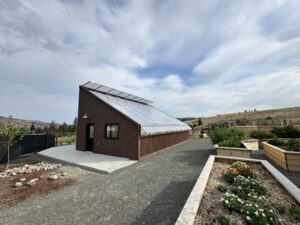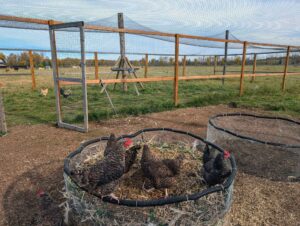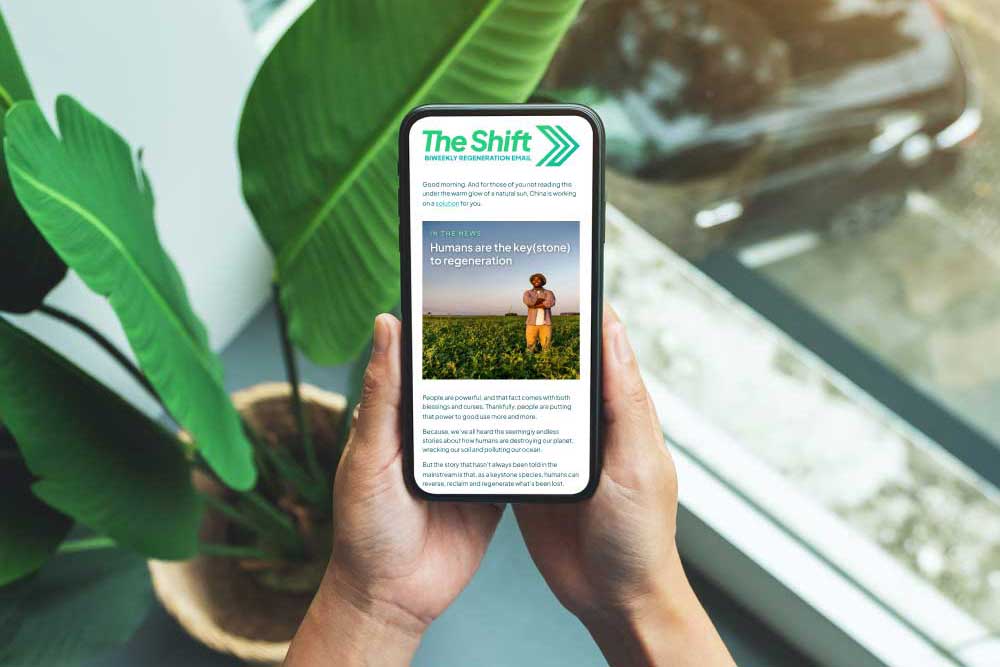What does 5th World do? What does regenerative living really mean? And, how can technology, nature, and humanity collaborate for a net-positive future?
We explore it all in this new series of interviews with our CEO, Marc Ziade.
Read Part One here.
What is 5th World’s mission and vision?
Marc: “Our mission is to accelerate the world’s transition to regenerative, distributed energy, water, and food systems. We believe this shift to be essential because we face numerous negative externalities today—environmental issues, food insecurity, societal polarization, mental health challenges, and erosion of trust in financial institutions, among others.
These problems stem, at least in part, from a 200-year trend of centralizing our systems for efficiency rather than resilience. And when you optimize for efficiency, you’re basically primarily optimizing for financial growth—which comes at a cost to our environment and society. As we continue down this path, these negative effects will only compound exponentially.
To change this paradigm, we must ‘relax’ the system by promoting and adopting distributed solutions. Decentralization enhances resilience in a system, and can enable the creation of positive externalities rather than negative ones.
Our vision, therefore, is a world built upon thousands of autonomous regenerative communities in numerous locations, each fostering harmony among technology, nature, and humanity. These communities are made up of individuals, households, neighborhoods, and cities that have self-custody of their energy, water, and food systems, allowing them to operate independently from centralized structures and ensuring a net positive impact on their ecosystems through regenerative principles. The different communities are interconnected as part of a global decentralised digital network through which they contribute to network governance and exchange value.
We think about these communities as redefining or elevating residential living. We call it Regenerative Living and it is about leveraging technology while partnering with nature to provide nutrient-dense food, clean water, and renewable energy. Regenerative Living enables communities to become a place of comfort, health, and well-being in times of stability and safe havens, producing their own food, energy, and water in times of instability.
At the core of our thesis is a belief that being autonomous and being regenerative are highly correlated and synergetic. On the one hand, being regenerative makes you more autonomous and we believe that individuals and societies are in need of more sovereignty and more ownership today which ultimately builds more resiliency for everyone. On the other hand, the best way to be more autonomous and resilient is by doing it the regenerative way, ensuring regeneration of resources used and a net positive impact overall.”
What products and services does 5th World provide?
Marc: “We have four main focus areas aligned with our mission to accelerate the transition to regenerative, distributed energy, water, and food systems.
First, there’s Regenerative Property Design. Our team can assist clients regardless of their starting point; from finding the right property to developing it based on its unique characteristics, maximizing its regenerative and resiliency potential. We follow a systems thinking approach focused on designing interconnected and circular systems. Our work includes food forest and garden design and placement, high tech passive solar greenhouses, solar microgrid design and installation, water security measures like rainwater harvesting, and much more. We also oversee the implementation of these regenerative systems, and we offer maintenance packages and concierge services post-project completion.
Next, we have our data solutions offering. This proprietary software assesses the health and regenerative potential of land and property as it relates to producing food, water, and energy. We call it Regen Tracker—a sort of Fitbit for properties that monitors their regenerative and resiliency potential and progress.
Then there’s V DAO, a decentralised community focused on the concept of regenerative network states. V DAO is a highly aligned global community of pioneers, creators, and contributors focused on bootstrapping and building autonomous regenerative communities, and on incubating token-based products that incentivize the adoption of autonomous regenerative systems.
Given our experience in teaching about, designing, and implementing autonomous regenerative systems, we’re now exploring the idea of raising funds to purchase land and create our first regenerative living residential community—a microcity. This project will feature residential units in a suburban or semi-rural area, easily accessible from the city.
Our microcity will embody the principles of high-tech, high-nature, and high-humanity. The high-tech aspect will integrate modern technology such as smart home automation to provide comfort and convenience. High-nature emphasizes ‘collaboration’ with the environment, embodied in regenerative features like a food forest and passive solar greenhouse, complemented by amenities like a spa, co-working spaces, etc. The microcity will also offer access to forest parks, mountain biking trails, and various outdoor activities that immerse you in nature. The high-humanity component focuses on fostering community values and connections.
Ultimately, the microcity serves as a demo for what an autonomous regenerative community can look like in reality.”





